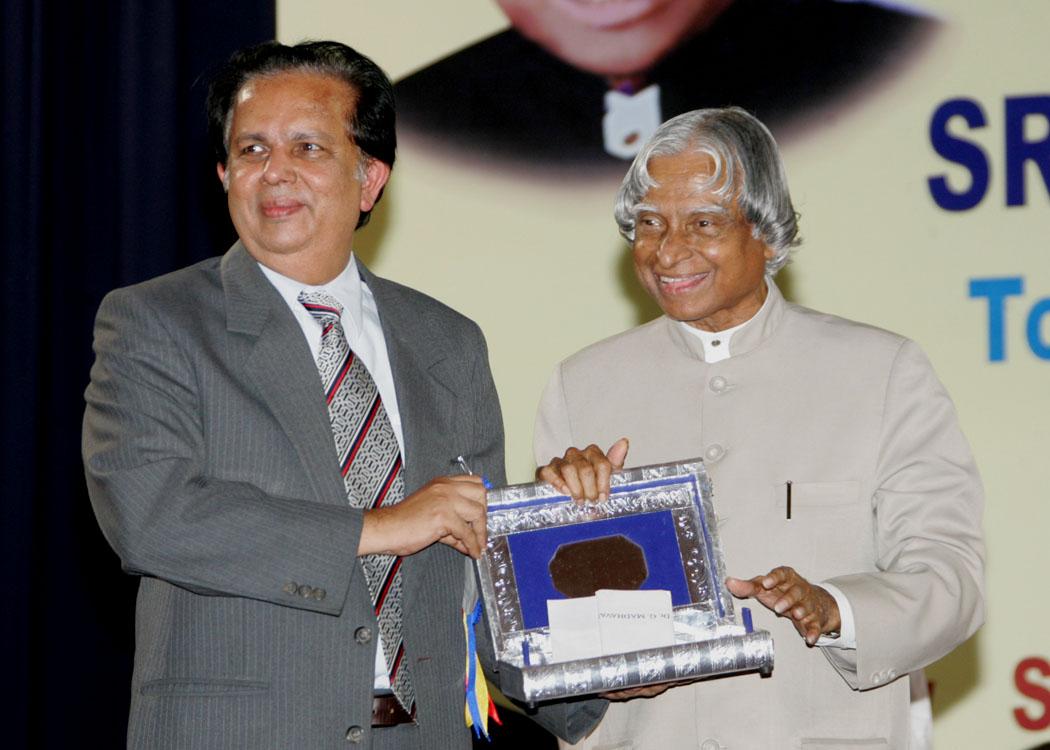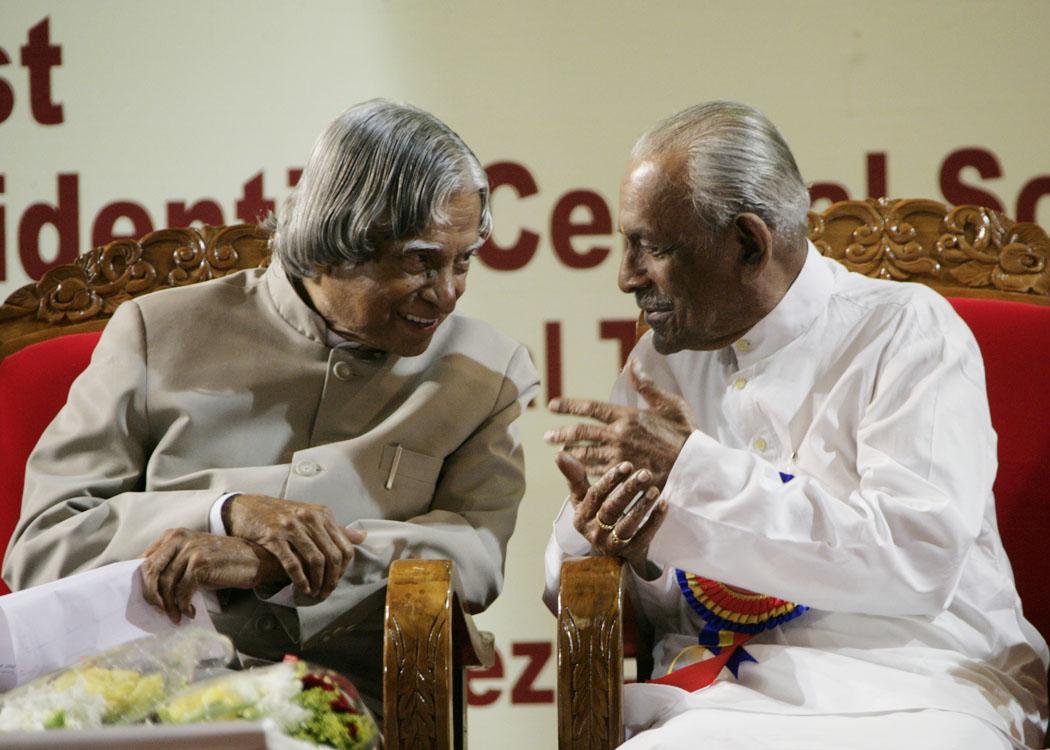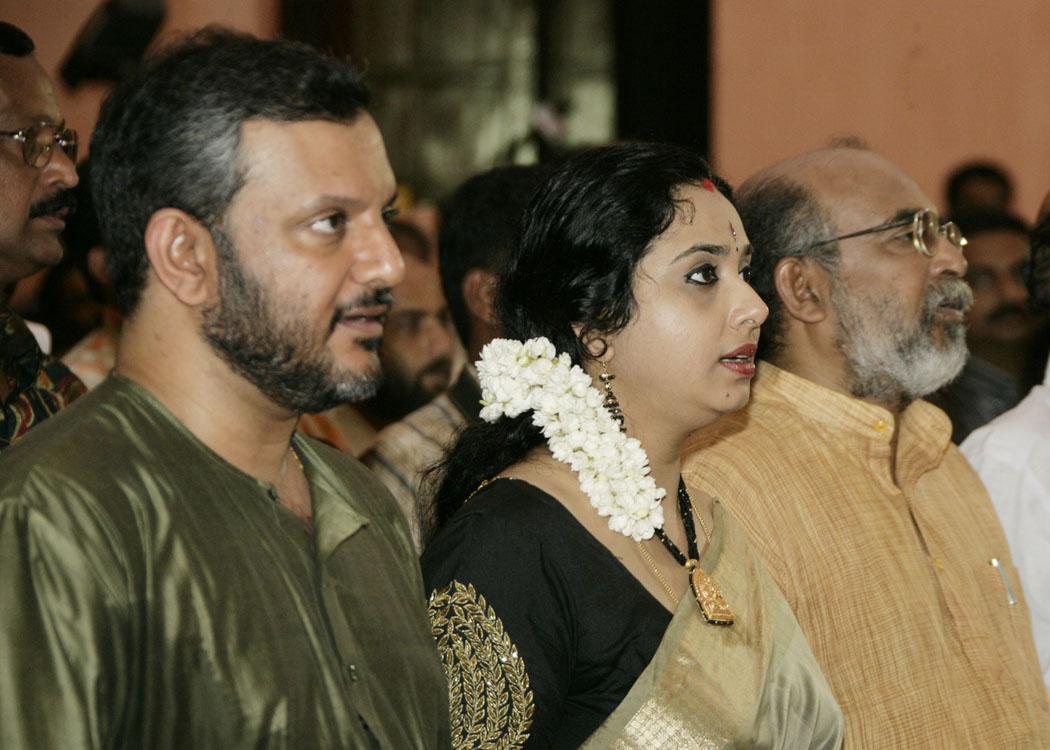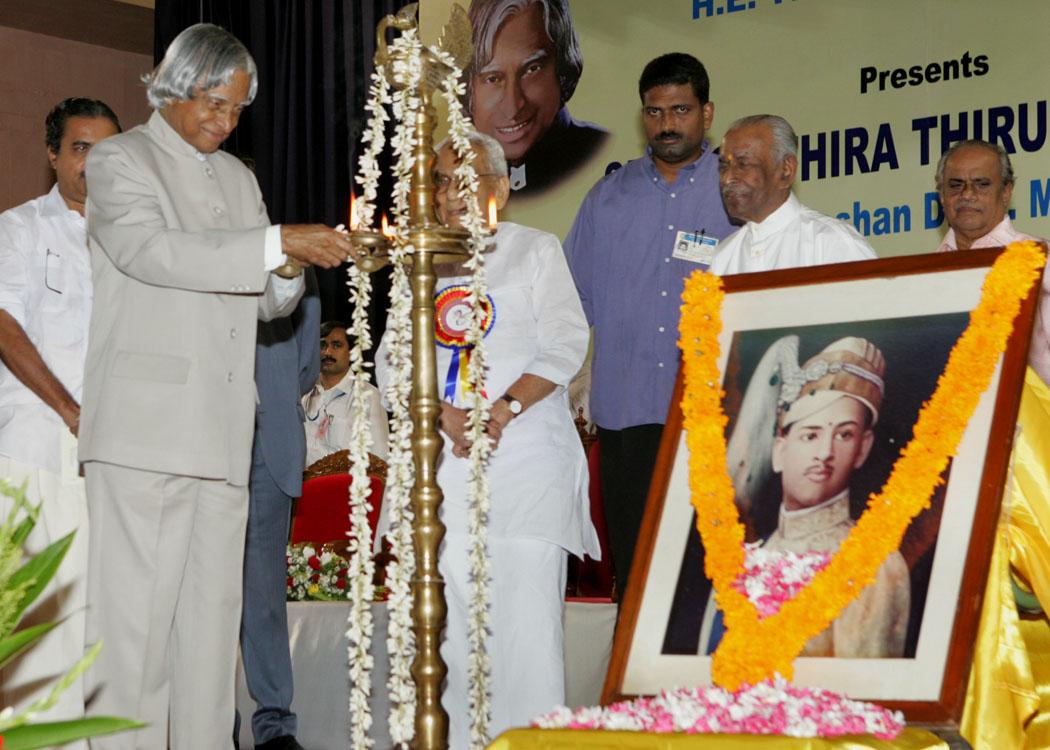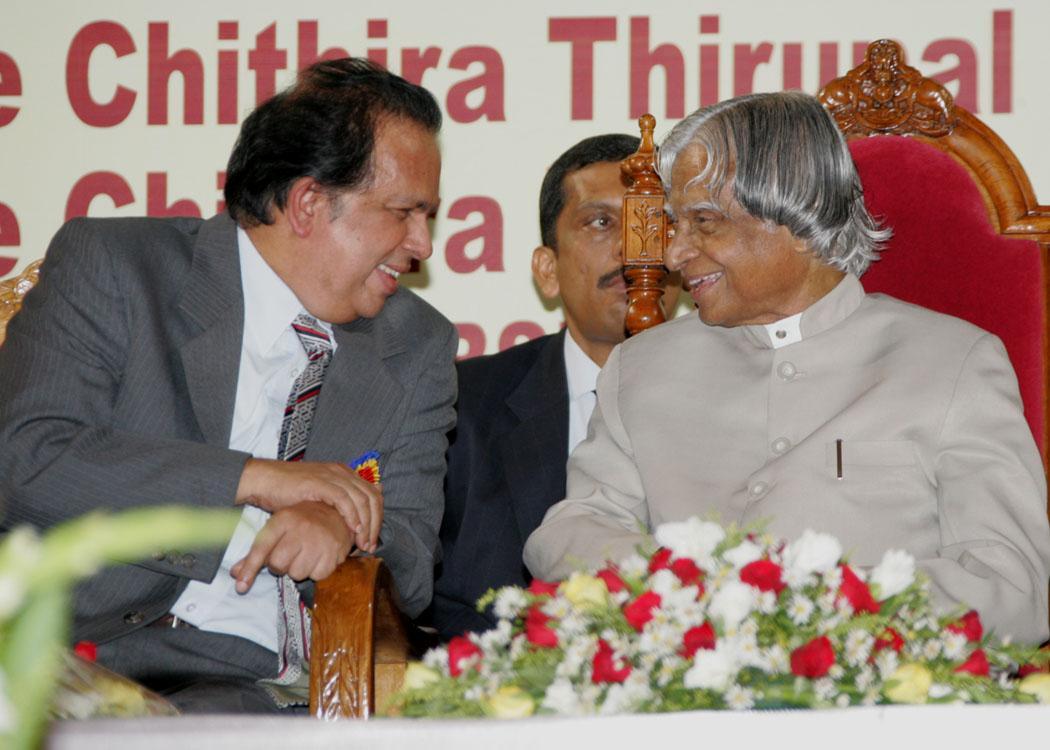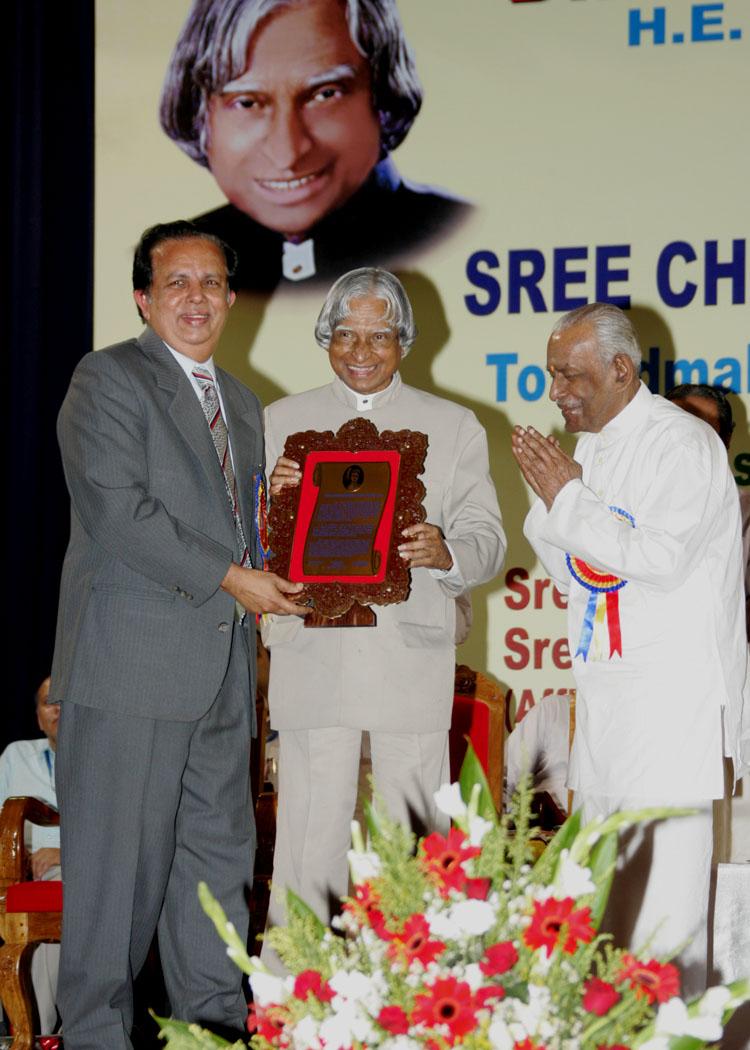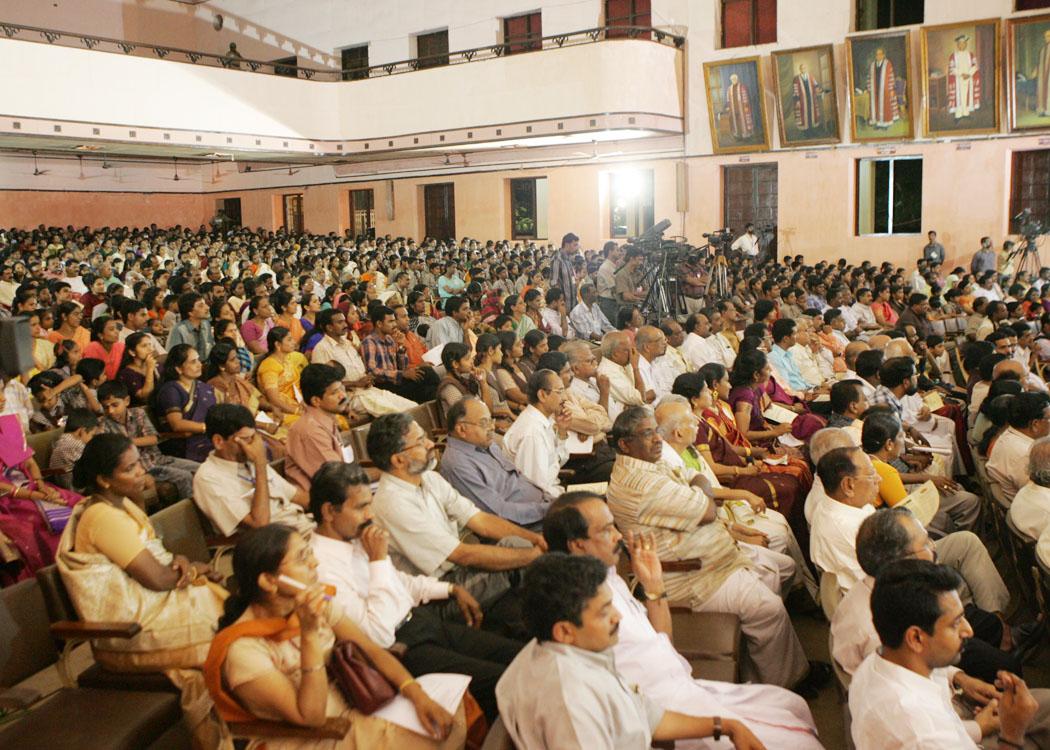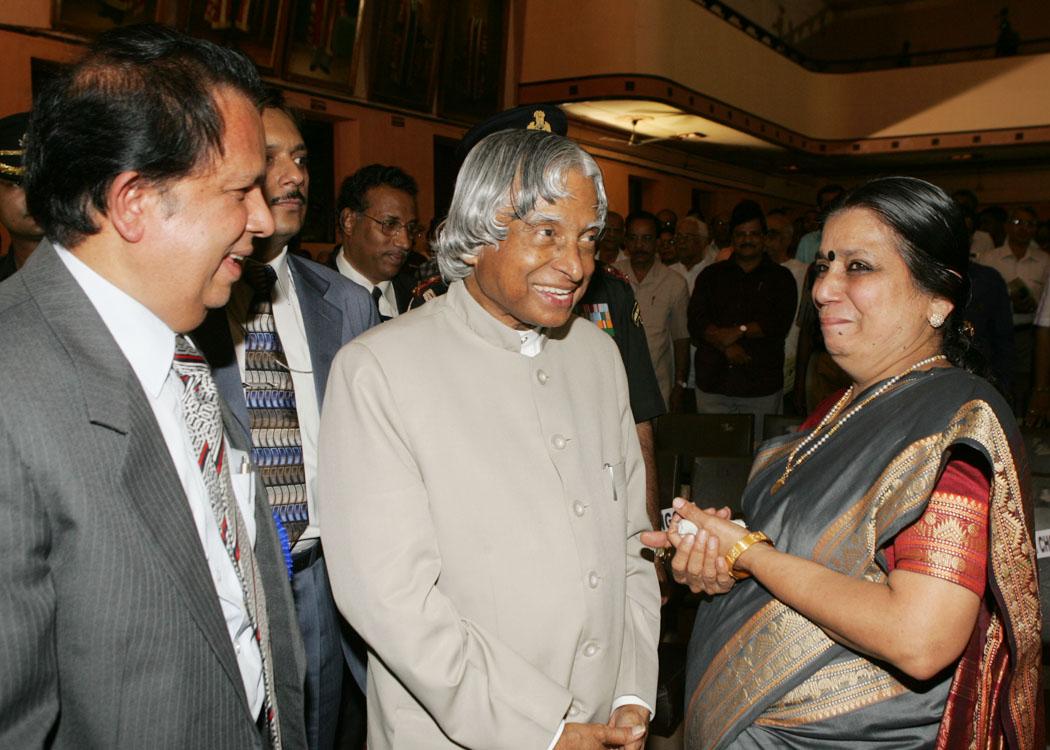Address at the Presentation of Sree Chitra Tirunal Trust Award, Thiruvananthapuram, Kerala
Thiruvananthapuram : 21-09-2006
Second Space Vision
I am happy to participate in the Sree Chitra Thirunal Trust Award presentation function. When I think of Sree Chitra Thirunal Bala Rama Verma Maharaja of Travancore, I recall my stay at Thiruvananthapuram for 20 years since 1961, when I realized how the people of Kerala shower great admiration, love and respect for the Sree Chitra Thirunal Maharaja. I used to ask my friends, about him quite often. During the years 1932 and 1933 the Maharaja constituted India?s first state Legislature based on universal franchise. He was a visionary and a person with nobility, who recognized the importance of democracy. His Highness made great contributions in the establishment of Travancore University. I admire His Highness for the great thinking, which led to the abolition of capital punishment. He lived his divine life as a Padmanabhadasa. He contributed to every walk of life in Kerala like education, healthcare, music, spiritualism and also to democracy. I am glad that Sree Chitra Thirunal trust has decided to institute an award in memory of this great human being. I congratulate my friend Dr. G. Madhavan Nair, for receiving the first Sree Chitra Tirunal Award for his services to the nation in space science and technology. When I think of space science, I am reminded of the vision of my guru, Dr. Vikram Sarabhai.
Indian Space Visionary
Prof. Sarabhai worked with Sir C.V. Raman in the area of experimental cosmic ray research at the Indian Institute of Science. Prof. Sarabhai later established the Physical Research Laboratory in Ahmedabad with space research as the focus. In 1962, he became the Director of the Space Science and Technology Centre (SSTC), Trivandrum, which started launching of sounding rockets for space atmospheric research. Prof. Vikram Sarabhai unfurled the space vision for India in the 1960s. One of the major missions of this vision was that we should build indigenous satellite launch vehicle capability to put our communication satellites into geo-synchronous orbit and remote sensing satellites into polar orbit. He envisaged that launch vehicles built in India should be launched from Indian soil. This vision led to intensive research in multiple fields of science and space technology. Many of us had the fortune to be part of Prof. Sarabhai's vision. My team and I were assigned the task of design, development and launch of India's first satellite launch vehicle, the SLV-3 and to put the Rohini satellite into orbit. My association with Dr. G. Madhavan Nair began when I was working as a rocket engineer at the Thumba Equatorial Rocket Launching Station (TERLS). He came from the Bhabha Atomic Research Centre. Dr G. Madhavan Nair and I worked together for nearly 20 years. He was with me as one of the leading members of the youthful SLV-3 team. This SLV-3 team has became very famous. All its members are contributing today to various national missions.
It is notable that as an important member of the SLV-3 team, Dr. G. Madhavan Nair did pioneering work in putting the country on the satellite launch vehicle map of the world. After the SLV-3 programme, Dr G. Madhavan Nair became the Project Director for PSLV, Director - VSSC and subsequently the Chairman of ISRO. With the guidance of space technology leaders starting from Prof. Vikram Sarabhai, and then Prof. Satish Dhawan, Prof. U.R. Rao, Dr. Kasturirangan and now Dr. G. Madhavan Nair, indeed it can be said that the space vision dreamt by Prof. Sarabhai has been fully realized when geo-synchronous launch vehicles became operational. Of course space programme is highly complex and risky and some times certain problems do occur in the form failures, but our space technologists have got a built-in strength and capability to defeat the problem and succeed.
Today, India with her 14,000 scientific, technological and support staff in multiple space research centers, supported by about 500 industries and academic institutions, has the capability to build any type of satellite launch vehicle to place remote sensing, communication and meteorology satellites in different orbits and space application has become part of our daily life.
India has a unique operational educational satellite named EDUSAT, which is able to reach education to remote areas of the country. I am particularly happy that Dr. Madhavan Nair has put into action many initiatives to move forward on the second vision of ISRO that is to lead the country to a preeminent position in all areas of space science and technology. Being in Kerala, let me also add that space technology can play a major role in the missions of Kerala for becoming the most developed state in the country. The specific areas of possible collaboration were suggested by me during my address to the Kerala Assembly on 28 July 2005.
In conclusion, we have seen how ISRO during the period from 1970 to 2005 has realized its first Vision ensuring the country?s capability in all aspects of space in application, spacecrafts, launch vehicles and launch complex. I have been discussing with the ISRO Scientists and Dr. Madhavan Nair the need to realize the second vision for space before 2030. While connecting the nation through space communication, enriching the nation by remote sensing, and marketing space launchers and spacecrafts, I foresee that another important mission as part of the second Space Vision for the nation would be Manned Space Missions to the Moon and Mars and the establishment of a space industry.
I am very happy that the Sree Chitra Tirunal Trust has selected Dr. G. Madhavan Nair for his distinguished service to the nation in space science and technology, which has contributed in multiple areas to national development, particularly rural development.
I once again congratulate Dr. G Madhavan Nair and my best wishes to all the participants in this programme for success in promoting excellence in the missions of the state and nation.
May God bless you.
QUESTIONS BY STUDENTS OF CHITRA TIRUNAL RESIDENTIAL SCHOOL AND CHITRA TIRUNAL PUBLIC SCHOOL
1. How is it possible to go ahead with the development in modern technology without affecting our cultural heritage?
- S. Aswathy, 7th Standard
Ans: Development in modern technology does not have to come in the way of maintaining our cultural heritage. Our cultural heritage talks about certain values like righteousness, co-operation with others and unity of minds all these things can be followed even while using the modern technology.
2. Why is India not self sufficient in the field of launching satellites? Why is there "Brain drain" in the field of space research?
- M. Akash, 10th Standard
Ans: India has got the capability to launch any type of satellite from Indian soil. There is no brain drain in the field of space research. We have number of scientists available with us who are working in our space programmes.
3. Honourable President proposed the vision 2010 by meaning India will be developed within the year 2010. And it is our dream. How can the Children, especially from the school help to make this dream comes true?
- Athul Shajahan, 9th Standard
Ans: I would like to correct that the vision is not 2010. It is 2020. The children should first excel in their studies. They should fix a aim and work to achieve the aim with confidence. If they encounter some problems while workings towards aim, they should defeat the problem and succeed. During holidays they can educate at least five persons who cannot read and write. Similarly they can plant five trees in their area and nurture them. They can participate in water and energy conservation programme. They can make their homes righteous and keep their homes and environment clean.
4. Russia and the US have sent astronaut to the Moon within 10 years of developing their first satellite. Even after 20 years of launching our first satellite we have not done it. Why are we late and what are the latest development regarding Chandrayan 1, when can we send a manned Mission to Moon?
- Arjun S. Warrier, 9th Standard
Ans: Indian space programme has been built with a prime objective of bringing the benefit of high technology to the common man in the areas such as tele-communication, remote sensing and meteorology. For example, unique EDUSAT launched by GSLV has been connecting students even from the remotest area through country wide classrooms. With the all round capability developed in the areas of space technology India is embarking on Chandrayan which is an unmanned mission to explore the Moon. The next phase is to study all the implications of undertaking a manned mission to the Moon and the Mars.
5. Many students in India have high aim. But they are not able to achieve their goal due to their poor economic conditions. How can they reach their goal?
- Rekha, 8th Standard
Ans: Economic condition need not come in the way of achieving the goal. Meritorious students can get loan for pursuing their education. Also, there are number of scholarship available in many disciplines. All that is required for you is to approach your school for advise whenever you are in difficulties. I am sure, your teachers and the school staff will be extremely happy to provide you guidance to reach your goal.

